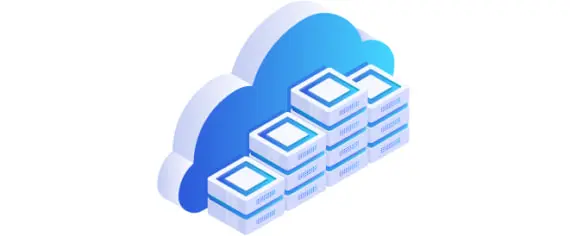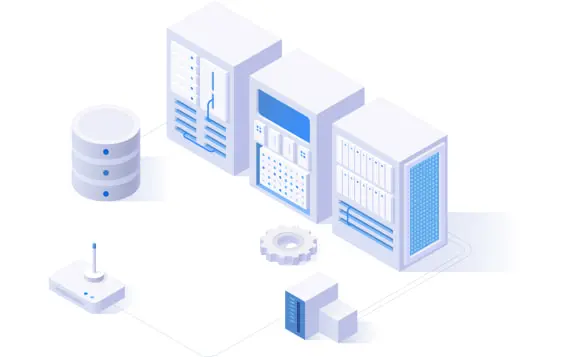Amazon EC2 Instance Replication

Leading Brands Trust NAKIVO

Amazon EC2 Instance Replication at a Glance
Amazon EC2 instance replication
Incremental Amazon EC2 replication and replication from backup
App-consistency
Consistent data of file servers, databases and Microsoft apps
Multiple replication destinations
Replication to the same or another AWS region and across accounts
Ransomware resilience
Automated disaster recovery without paying ransoms
Amazon EC2 automated failover
Failover to replicas for near-instant resumption of workflows
Multi-tenancy for RaaS
Up to 100 isolated IT environments for MSP clients
Amazon EC2 Instance Replication
with NAKIVO Backup & Replication
Incremental Amazon EC2 Instance Replication
Ensure fast data transfer and lower storage consumption with incremental replicas of AWS EC2 instances. NAKIVO Backup & Replication creates the full instance replica only once and then saves only the changed data blocks. The solution uses native Elastic Block Store (EBS) snapshots to capture changed data.
Multiple Replication Destinations
Create replicas of Amazon EC2 instances and store them in the same or any other AWS region. You can also send replicas to another AWS account for higher security.
Policy-Based Replication
Configure custom policies to automatically create replicas of those AWS EC2 instances that match your criteria (name, location, size, and others). NAKIVO Backup & Replication constantly monitors your instances and automatically adds new ones if they match the policy.
Enhanced Recovery Point Management
With up to 30 recovery points per instance replica, you can achieve the shortest recovery point objectives (RPO) and run almost real-time replications. The flexible grandfather-father-son (GFS) retention scheme allows you to rotate recovery points regularly, reducing the storage size.

Third-Party Solutions Integration
Take advantage of third-party solutions for the enhanced administration and automation of your replication activities. Easily integrate solutions via HTTP APIs and use NAKIVO code examples to speed up configurations.
Network Acceleration
Speed up the replication process and network offloading by two times. Whether you have a busy LAN/WAN or are running replication during peak hours, network acceleration will compress and optimize data before sending it over the network.
Multi-Tenancy for RaaS
Managed service providers can create up to 100 isolated IT environments (tenants) for their customers. Distribute resources, offload routine tasks, and manage all your tenants via a single web-based
management console.
App and Database Consistency
Using the App-Aware Mode, you can create Amazon EC2 instance replicas with transactionally consistent data from your file servers, Oracle Database and Microsoft applications (Exchange Server, SQL Server, Active Directory).
EBS Volume Selection
You can choose which EBS volumes of the EC2 instance you want to include in the replica. Simply exclude unnecessary volumes to improve the replication speed.

Near-Instant Failover
Replicas make disaster recovery fast and simple without data loss or downtime. You can configure, test and fully automate the failover process. So when the primary account is corrupted, you’ll need only a couple of clicks to power on the AWS EC2 instance replica in another location.
Automated Disaster Recovery
Get ready for a variety of disaster scenarios with advanced Site Recovery functionality. Configure failover and failback and then initiate them almost instantly during emergencies. Additionally, you can verify your disaster recovery workflows in a non-disruptive test mode.
Storage Space Savings
Replicas can take a lot of space, particularly the initial full replicas of Amazon EC2 instances. To optimize storage usage, NAKIVO Backup & Replication automatically excludes swap files and partitions during replication. You can also enable Log Truncation for Microsoft SQL Server and Microsoft Exchange to automatically delete their log files as soon as the replication is completed.
Security
Ensure that your replication workflows and their configurations are reliably protected from unauthorized access with encryption and two-factor authentication (2FA). You can also take advantage of the security principle of least privilege and set up only the user permissions needed to perform a certain task.
Amazon EC2 Instance Replication
Near-Instant Recovery with No Data Loss
Ensure no data loss with app-consistent replicas of EC2 instances. Simply power on the replica in another AWS region when your primary account is corrupted. Advanced automation tools and flexible retention shorten recovery point objectives (RPO) and minimize the risk of data loss.
Ransomware resilience
Avoid paying ransoms and restore your data within minutes by turning replicas into running AWS EC2 instances in another location. Role-based access control, encryption and two-factor authorization (2FA) add an extra layer of security and prevent unauthorized access to your replication and disaster recovery activities.
Space and Performance Optimization
Replication can require a lot of storage space and put an extra load on your network during business hours. To avoid performance issues, NAKIVO Backup & Replication excludes swap files from replicas, deletes logs and compresses in-flight data for a faster transfer speed.
Replication as a Service
Managed Service Providers (MSPs) who deliver replication as a service can use NAKIVO Backup & Replication to streamline their services and make administration easier. The solution allows MSPs to create isolated environments for their customers and manage them via a single pane of glass. Learn more about all NAKIVO benefits for MSPs.
Business Continuity
Resume your IT operations with no or minimum downtime. Scheduled regular replication, automated failover, failback and other disaster recovery workflows enable almost instant migration to another AWS region or account during a disaster.

Multi-Platform Protection
Ensure robust protection for your virtual, physical, cloud environments and SaaS with NAKIVO Backup & Replication. Along with Amazon EC2 instances, the solution supports VMware vSphere, Microsoft Hyper-V, Nutanix AHV, Windows/Linux-based servers and workstations, Microsoft 365 and Oracle Database.
Simple Web-Based Administration
Gain complete visibility into your data protection activities with a simple web-based management console. Easily administer your backup, replication and recovery tasks across multiple platforms.
Frequently Asked Questions
What is an AWS EC2 instance?
Simply put, an EC2 instance is a virtual server in the cloud. The abbreviation stands for Elastic Compute Cloud (EC2)—the web service that provides compute capacity on Amazon’s environment.
Why do I need replicas of Amazon EC2 instances?
Even though Amazon claims that its cloud services are 99% reliable, there’s still a chance of human mistakes, wrong security configurations and virus attacks. Regular replication of your instances ensures business continuity and helps you avoid data loss.
What type of encryption is used?
NAKIVO Backup & Replication uses the AES 256 encryption standard, which is commonly used by banks, financial institutions and e-commerce. You can encrypt your EC2 repository and the data transferred over the web to protect your information from unauthorized readers.
What is Amazon EC2 instance replication?
Replication is the process of creating an EC2 instance replica, a pre-configured virtual appliance named Amazon Machine Image (AMI). An AMI is an exact copy of the AWS EC2 instance at a particular point in time.
What are the deployment options?
You can easily deploy NAKIVO Backup & Replication as a pre-configured Amazon Machine Image (AMI) and virtual appliance (VMware vSphere, Nutanix AHV). Or install the solution on physical servers (Windows, Linux) and NAS. Book a FREE deployment session if you need the assistance of a NAKIVO tech engineer.
Can I automate my replication activities?
Absolutely. You can schedule replication and configure custom criteria to create replicas of particular instances. You can also link your backup or replication workflows to run automatically one after another. If these features are not enough, you can run pre- and post-job scripts or integrate third-party solutions.




